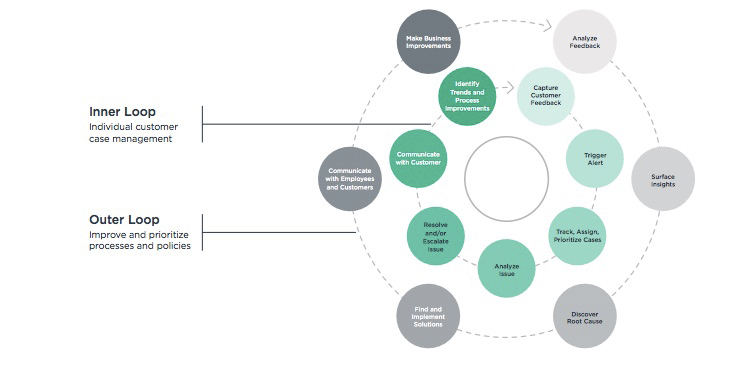When starting your CX journey, the immediate focus is almost always on collecting customer data. After all, how can you assess your current situation without any customer feedback? So after scavenging social channels, physical surveys, and phone surveys, you have a mountain of data in front of you. This is a definite accomplishment, but it is also the beginning of another phase of careful deliberation.
You know you need to prioritize this mountain of data in order to avoid picking up more than you can carry, but the way you categorize your customer feedback is rarely obvious. In fact, the most obvious path to take can actually get in the way of your CX program’s ultimate goal: positively impacting your revenue.
In order to help you develop an approach to your data, I will explain the obvious path many businesses follow, why it can actually harm your customer experience, and which two ways you can prioritize your data to get the results you want!
Don’t Weight Your Data
Many businesses try to summit their data mountains by weighting their data, or in other words giving data from one specific channel president over others. Though this option may seem like a good one at first, in the long run these businesses miss out on the best opportunities. Why do I say this? Because in weighting your data, you are missing out on improving other experiences. Yes, one area may excel, but one out of many is still a minority.
When it comes to customer experience, every experience matters. Each touchpoint available to your customer is an opportunity for them to interact with your brand and is therefore an extension of it. By weighting data, you are disregarding several points in your customer’s journey, risking a potential revenue loss because of a disjointed experience or a failure to deliver on a brand promise (which is essential to develop customer loyalty).
In order to avoid these difficulties, weight all data the same regardless of channel. An omnichannel perspective delivers a more thorough understanding of your customer’s needs and how you can meet them. Once you’ve done this, I suggest trying a few other prioritization methods that will bring you more success with your customers.
Do Prioritize Negative Experiences
Everybody appreciates a good compliment, so it can be tempting to reach out to satisfied customers to find out what you did right. While this can be helpful, it is ignoring your most at-risk customers. These are the customers that need the most immediate attention as 91% of unhappy customers won’t return to your brand. Because unhappy customers are a reality for any business, this means that putting off responses to unpleasant feedback is a sure way to lose customers.
When you prioritize these customers, the opposite it true. In fact, you are more likely to gain loyal customers as 70% of the time, a person will become a repeat customer when a complaint is resolved in the customer’s favor. It simply makes good CX sense to prioritize the negative experiences.
Do Prioritize by Time Cases are Created
After singling out negative experiences, I have one more way for you to narrow down your prioritization strategy: Respond to those negative experiences by the time they were created.
Think of your plan of attack like a countdown. Give yourself a time limit for how long a case can remain unresolved. This will help you to close the loop with your customers in a timely manner and to retain customers. I would suggest your goal be 48 hours and, at the very most, under a week, as 50% of consumers give a brand only one week to respond to an inquiry before they stop doing business with them. When you respond to your customers as quickly as possible, you are letting them know that they are your priority, and as we all know, the customer is king!
When it comes to approaching your customer data, it is imperative that you first develop a plan of attack. By making sure that you are weighing all your data equally and prioritizing by negative experience as well as the time cases are created, you are setting yourself up for positive revenue impact!

